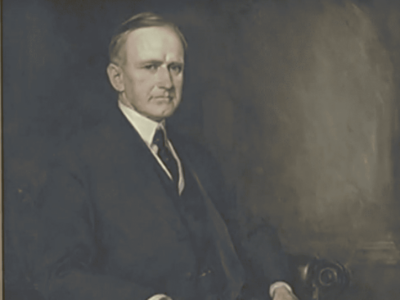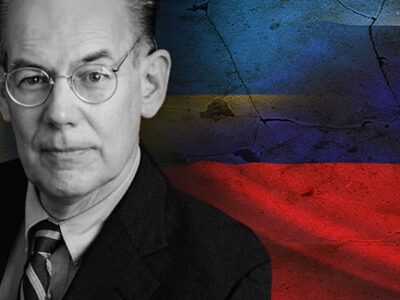May 29 marks the 90th anniversary of John F. Kennedy’s birth. Kennedy was struck down by an assassin’s bullet in the prime of life, prompting national anguish. His vitality, idealism, powerful rhetoric, and charisma inspired many younger Americans to social activism. Kennedy was extolled as “the pride of western civilization,” and his administration was widely praised for its virtue, style, and wisdom. Many insisted Kennedy would have led Americans to new heights if he had eight years in office.
One of the most enigmatic elements of Kennedy’s life is his religious faith. His religious affiliation was a major issue in the 1960 election, and to this day he is the nation’s only Catholic president. His assassination and funeral evoked a torrent of religious rhetoric, analysis, and emotion. Yet, beneath his exuberant, commanding public persona lurked private vices that contradicted his public Catholic faith.
Kennedy’s mother, Rose, was a devout Catholic who attended Mass every morning. Desiring her children to become committed Catholics, she took them to Mass every Sunday and all holy days, regularly discussed sermons with them, listened to their nightly prayers, and required them to recite their catechism lessons each week.
Kennedy had only one year of Catholic education at Canterbury, a private high school in Connecticut. At both Choate, an elite Episcopal preparatory school, and Harvard, he frequently attended Mass, and in college he belonged to St. Paul’s Catholic Club. Like many adolescents, Kennedy underwent a period of religious doubt. The future president made an intellectual accommodation with Catholicism before running for Congress in 1946, perhaps as a result of his combat experiences in World War II, his search for meaning in life, or his belief that an ex-Catholic could not be elected in Massachusetts.
Some insisted that Kennedy’s faith was genuine and meaningful. Kennedy was “a man of deep faith who knew how to pray,” maintained Richard Cardinal Cushing, the archbishop of Boston, who married John and Jacqueline Bouvier in 1953, baptized their children, and prayed at his inaugural. Cushing maintained that Kennedy “never failed to put his confidence in the hands of the Unchanging God.” Brooks Hays, an eight-term Southern Baptist Congressman who served as Kennedy’s liaison with Protestants, called the president “a devout Christian whose dedication to the work of our Lord is beyond challenge.” Kennedy attended Mass regularly, and numerous friends and authors claimed that prayer was very important to him.
On the other hand, others who also knew Kennedy well termed his religious convictions shallow and saw little evidence that his faith influenced his thought and actions. Numerous biographers argue that Kennedy showed little intellectual interest in Catholicism. Theodore Sorensen, his long-time policy advisor and speechwriter, contended that he did not care “a whit for theology.” Kennedy’s loyalty to the Catholic Church seemed to be based much more on identification, affiliation, and ritual observance rather than on following its moral teachings or its principles that were relevant to political life. Kennedy’s private behavior, especially his vulgarity, sexual infidelity, and deceit, differed sharply from his public persona and violated traditional Christian moral tenets. That Kennedy had many sexual partners while he lived in the White House is well documented. Throughout his life, the Democrat carefully covered up not only his sexual indiscretions but his serious health problems.
Despite his moral flaws, Kennedy masterfully played the role of the nation’s high priest of civil religion, quoted the Bible frequently, and spoke at all three presidential prayer breakfasts during his years in office. Kennedy sometimes used religious language to describe his personal sense of mission. Like many Protestant presidents, he accentuated America’s religious heritage and asserted that God had commissioned the United States to promote freedom around the world. Moreover, while the relationship between his policies and his faith seems tenuous, Kennedy did present moral rationales for his stances on numerous issues, including education, juvenile delinquency, women’s rights, world hunger, poverty, the Alliance for Progress, the Peace Corps, Civil Rights, and the Limited Test Ban Treaty.
Kennedy’s life demonstrates the irreducible complexity of human beings: Many people’s beliefs and behaviors seem to others to be inconsistent, if not contradictory. How Kennedy could regularly attend church, profess to be a good Catholic, and convince some of his closest associates that his faith was genuine while violating his church’s most fundamental teachings about marital fidelity, sexual purity, and honesty is difficult to understand.
More positively, his approach to the office and policies helped convince Protestants and Jews that Catholics would not seek to impose their views of faith and morality on others when they held political power and helped increase dialogue between Catholics and other Americans. His scrupulous adherence to the separation of church and state helped improve relations between Catholics and Protestants. Finally, his presidency helped inspire Catholics to engage more fully and fruitfully with the larger American culture.



